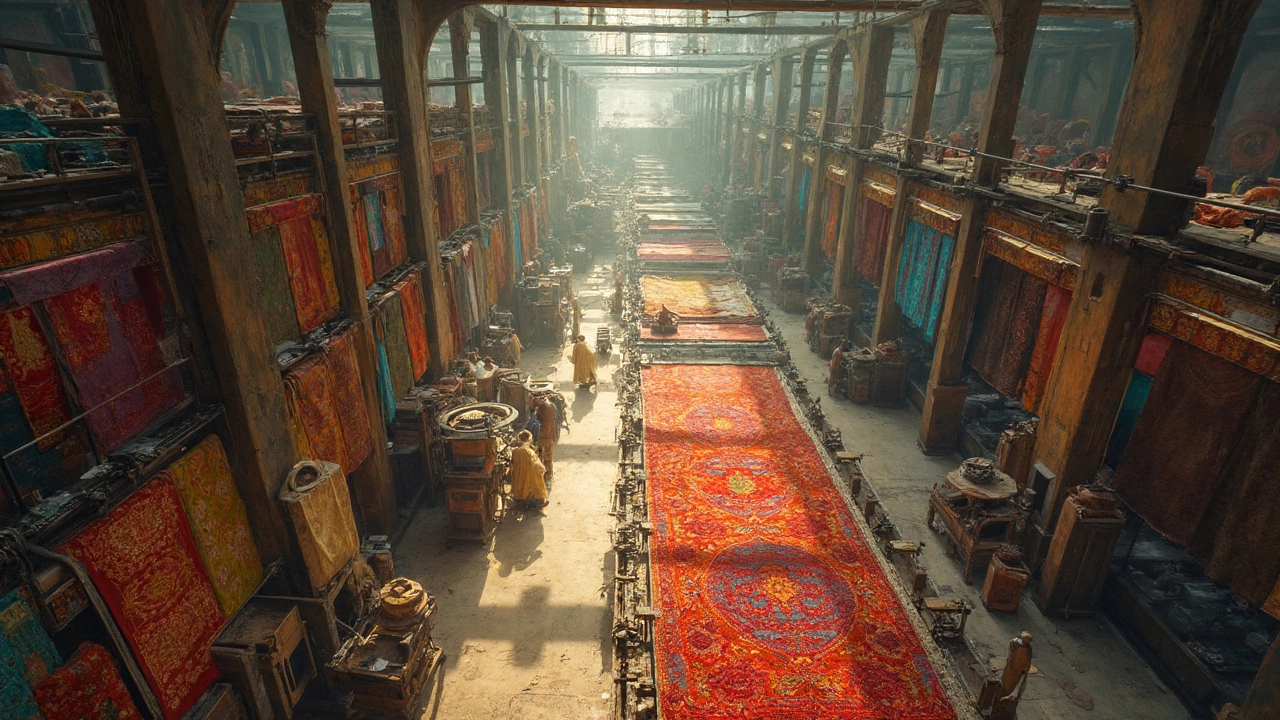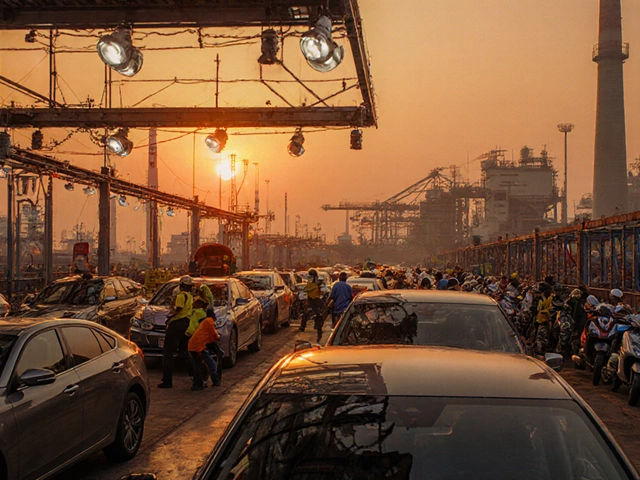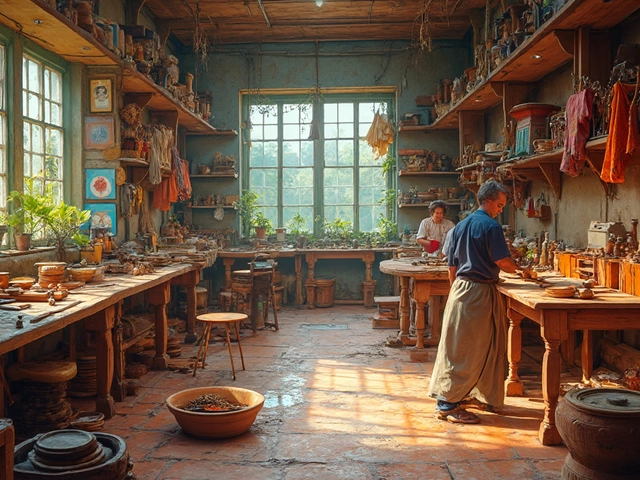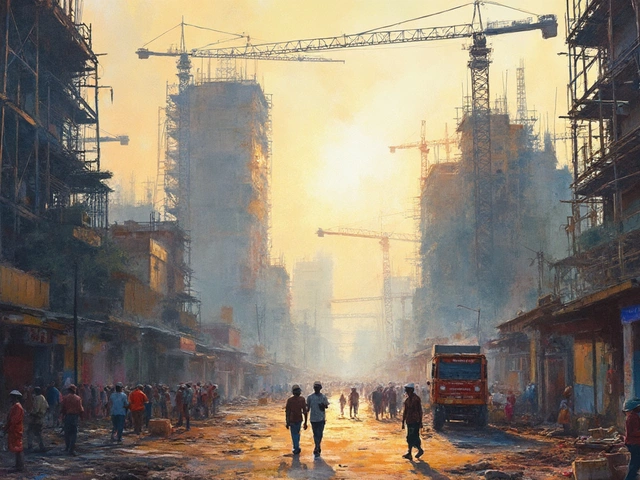India's textile industry, one of the oldest sectors in the country, isn't just important for its economic contributions. It also holds rich cultural significance. Yet, despite its historical prominence, the industry has seen better days, and its decline is becoming more pronounced.
So, what's shaking up this sector? For starters, imagine trying to stay in the game with outdated equipment. It's like using dial-up internet in the age of fiber optics. Many manufacturers still rely on old machines that can't compete with the efficient high-tech systems other countries have adopted.
And it's not just tech issues. Production costs are climbing, making it harder to keep prices competitive globally. Plus, other countries like Bangladesh and Vietnam are breathing down India's neck with their lower labor costs and aggressive marketing, sweeping away potential contracts.
Environmental regulations are another piece of the puzzle. While these rules are vital for sustainability, compliance can be expensive and complex. Smaller firms especially struggle with these, adding another layer of difficulty in staying afloat.
- Historical Context and Significance
- Challenges Facing the Industry
- Global Competition
- Technological Advancements Needed
- Potential Solutions and Future Prospects
Historical Context and Significance
India's textile industry has a story that's as old as civilization. Dating back to the Indus Valley era, it's been a vital part of the nation's economy and culture. Think about the ancient skills that have been passed down through generations, weaving not just cloth but tales of resilience and creativity.
In the colonial period, India was a major textile hub exporting to various parts of the world. With its cotton, silk, and wool, the country became the heart of global trade.This was until the British colonists started swapping local handmade products with industrialized British goods, causing major disruptions.
Post-independence, the country worked hard to reclaim its textile dominance. By the 1980s, India was flexing its muscles again as a leading exporter. Fast forward to the early 2000s, and the industry contributed significantly to GDP and employment. In fact, it employed over 35 million people at its peak, indicating its importance in the socioeconomic fabric.
Despite these times of glory, changes in the global market dynamics have not been kind. Traditional techniques, while beautiful, aren't always efficient against modern-day mechanized production. The challenge is finding a balance between preserving cultural heritage and adopting the technological advancements needed to compete.
In this ever-evolving landscape, acknowledging the context and the significance of the past will be critical in navigating the future of India's textile manufacturing.
Challenges Facing the Industry
The textile industry in India is facing a host of challenges that are slowing its growth and competitiveness both domestically and internationally. Understanding these hurdles is vital for devising effective solutions.
Outdated Technology
One of the biggest issues is the reliance on outdated machinery. Many units operate with equipment that was considered advanced decades ago. This reliance results in lower efficiency and higher production costs, making it difficult for Indian textiles to compete with countries using modern, state-of-the-art technology.
Rising Production Costs
The cost of raw materials such as cotton and wool has risen significantly. Wage demands have also increased, adding to the financial burden. With rising costs, maintaining competitive pricing becomes a herculean task, especially when countries like Bangladesh can produce garments at a fraction of the cost thanks to their cheaper labor.
Environmental Regulations
Compliance with stringent environmental guidelines poses another challenge. While these regulations are crucial for sustainability, adhering to them often requires expensive upgrades and modifications, which can be financially taxing, especially for small and medium-sized enterprises.
Global Competition
India faces stiff competition from countries like China, Vietnam, and Bangladesh. These nations attract more business due to their aggressive marketing strategies and lower production costs, pulling away potential clients from Indian manufacturers.
Fragmented Structure
The industry is highly fragmented; vast numbers of small-scale operations struggle to scale up due to lack of capital and stiff competition. Their inability to invest in innovation and modernization further marginalizes them in the global market.
| Country | Average Labor Cost (USD/Hour) |
|---|---|
| India | 2.6 |
| Bangladesh | 0.3 |
| Vietnam | 1 |
These challenges compound to create an environment where the manufacturing sector struggles to evolve and maintain its once-dominant position in the world market.
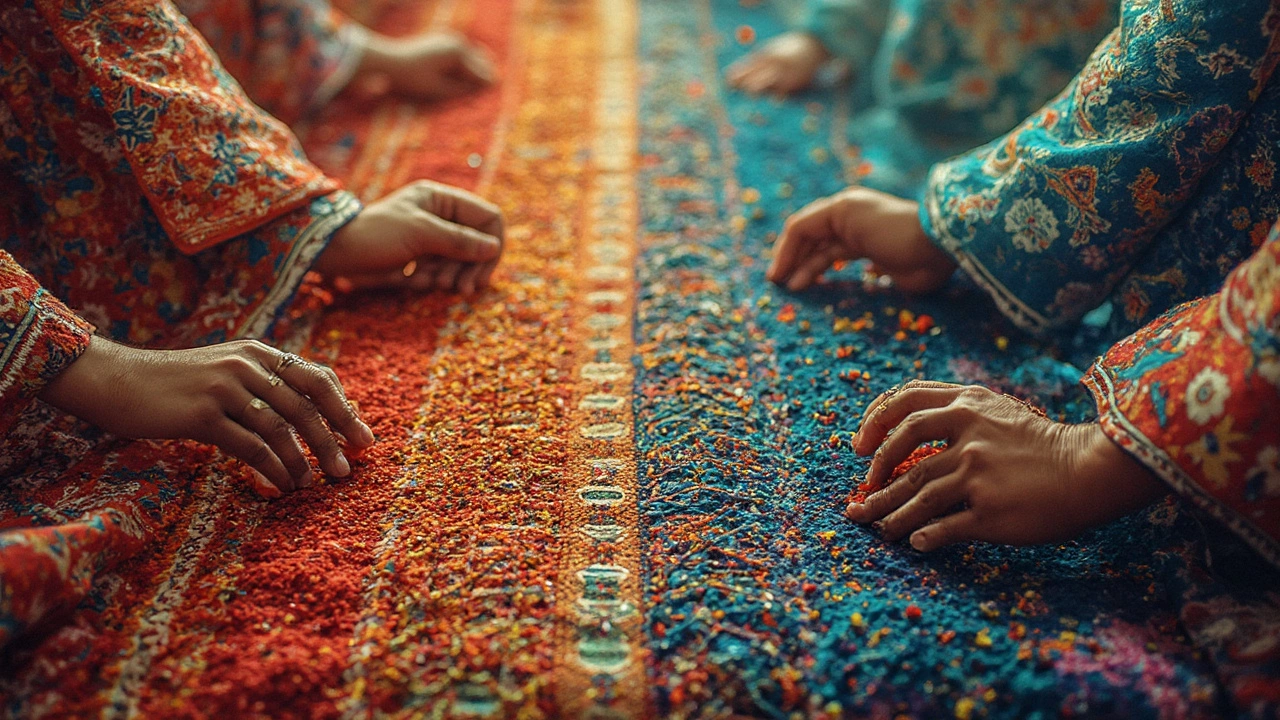
Global Competition
When it comes to the worldwide stage, the textile industry in India is facing some serious heat. Countries like China have long dominated the market, but now places like Vietnam, Bangladesh, and even Ethiopia are stepping up, offering lower wages and streamlined production processes. It's like everyone's leveling up and India is finding it hard to keep pace.
The competition is relentless, with these countries offering attractive packages for international buyers. They're not just focused on low costs, they're also pushing for faster delivery times, often taking advantage of modernized infrastructure which India currently struggles to match. India needs to rethink strategies to stay relevant in these high-speed industrial races.
Competitive Pricing
Price is a big player here. While India’s labor costs are low compared to Western standards, they can't always compete with the rock-bottom labor rates of Vietnam or Bangladesh. This pricing battle means manufacturers have to constantly evaluate and adjust their budgets to remain appealing to international buyers.
Some companies are now looking at strategies like reducing waste and improving production efficiency. These measures help cut down costs without lowering quality, a necessary step as global clients increasingly demand both affordability and high standards.
Quality Perception
Another hurdle is the perception of quality. Brands are picky about where they source their materials, as superior quality can often justify a higher price. Indian textiles are appreciated for their craftsmanship, but inconsistency in quality can sway buyers towards other countries that promise more uniform standards.
To counter this, Indian manufacturers are investing in quality control measures. It's a step in the right direction if they want to maintain and grow their presence in international markets.
Trade Barriers
And let’s not forget about trade tariffs and regulations. These can seriously affect how favorable a country looks on paper when compared to its peers. Any fluctuation in trade policies elsewhere can redirect business streams overnight.
However, by tapping into free trade agreements and improving diplomatic industrial ties, India could open new doors in the textile game. With a strategic overhaul and improvements both in operations and policy negotiations, India can potentially navigate through these challenges, swinging back as a formidable global competitor.
Technological Advancements Needed
The textile industry in India is standing on the brink of a revolution, yet it seems stuck with one foot in the past. One of the biggest hurdles is its reliance on outdated machinery. To jumpstart the manufacturing sector, embracing technology is key.
Automation in Production
Imagine if factories incorporated automation like the assembly lines seen in the automotive world. Automated weaving machines can drastically cut down on both time and manual errors, leading to more uniform products at lower costs. Plus, it frees up workers to focus on more complex tasks, which could be a game changer.
Digital Printing Over Traditional Methods
Digital printing is the next big thing. It offers precision and variety that traditional methods just can't match. It cuts down on waste and pollutants significantly. That's a win not only for the industry but also for our environment.
Data-Driven Decision Making
It's not all about machines, though. Using data analytics to predict trends and optimize production processes is like having a crystal ball for businesses. It's about making informed decisions and staying one step ahead of the curve.
Embracing Sustainable Technologies
With growing emphasis on sustainability, incorporating eco-friendly technologies has become non-negotiable. Techniques like waterless dyeing can drastically reduce water consumption—a big deal considering water shortages in many regions.
Potential Impact
Implementing these technologies doesn't just improve efficiency; it elevates the playing field globally. By modernizing, the textile industry in India can compete more effectively on the global stage, attracting more business and boosting the economy.
| Tech Type | Potential Benefits |
|---|---|
| Automation | Increases productivity, reduces errors |
| Digital Printing | Higher quality, less waste |
| Data Analytics | Improves decision-making |
| Sustainable Tech | Reduces environmental footprint |
In short, while the road to revamping is rocky, these tech upgrades offer a clear path to revitalize India's textile industry. It's time for manufacturers to set aside tradition and stride confidently into the future.

Potential Solutions and Future Prospects
The decline in India's textile industry is concerning, but there are ways to turn things around. By focusing on a few key strategies, the sector can regain its strength and even expand its global footprint.
Embrace Technology
Investing in new technology is crucial. Modernizing equipment not only boosts efficiency but cuts costs in the long run. Imagine switching from a manual loom to an automated weaving machine—it’s a game-changer that can increase output and quality. Plus, blending in smart technologies like AI can optimize production lines and ensure better quality control.
Government Support
Government policies can be a catalyst for change. Incentives like tax breaks or subsidies for manufacturers investing in technology upgrades can ease the financial burden. Also, trade policies should be tweaked to make India a more attractive option for global buyers.
Sustainability and Eco-friendly Practices
With the growing trend toward eco-friendly products, embracing sustainable manufacturing can open new markets. Eco-labels and certifications can serve as selling points, assuring buyers of the environmental responsibility of Indian textiles.
Upgrading Skills
Skilling the workforce is as important as upgrading machines. Programs offering training in new technologies will ensure that the workforce can operate and innovate within modern systems. This not only improves productivity but also retains employment rates within the industry.
Collaborative Efforts and Export Strategy
Partnering with international companies for technology sharing or joint ventures can give Indian manufacturers a competitive edge. Moreover, targeting untapped markets through strategic export planning could open new revenue streams.
The journey to revitalize the textile industry in India will take time and effort. However, with a focused approach on tech, policy, sustainability, and skill development, the future holds promising prospects.
